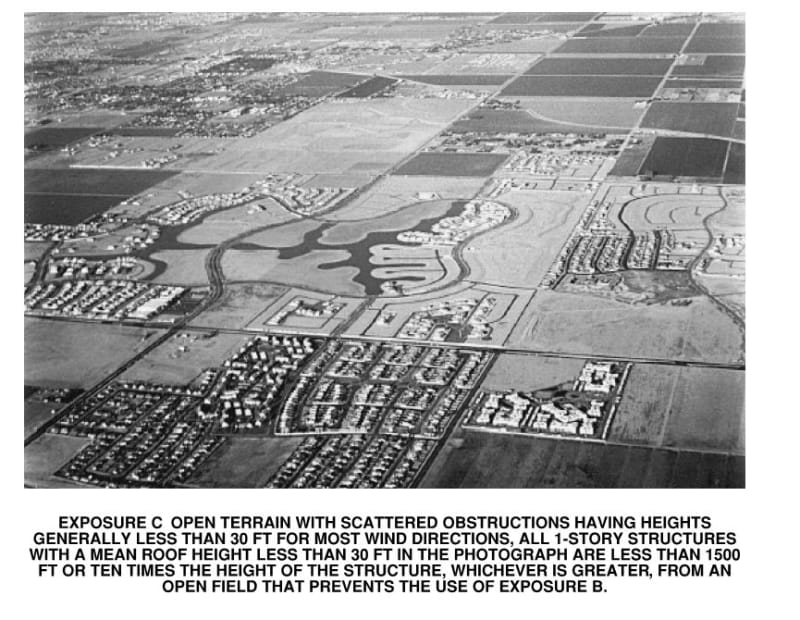I was hoping the collective good could provide me with an independent second (or third, fourth, fifth, etc.) opinion. We are designing a building immediately east of the building shown in the center of the 1,500 foot circle (see attached image). Our building will have a mean roof height of less than 30 feet. Would you classify this as Wind Exposure B or C in accordance with IBC 2012 (ASCE 7-10)? Why?
Navigation
Install the app
How to install the app on iOS
Follow along with the video below to see how to install our site as a web app on your home screen.
Note: This feature may not be available in some browsers.
More options
-
Congratulations waross on being selected by the Tek-Tips community for having the most helpful posts in the forums last week. Way to Go!
You are using an out of date browser. It may not display this or other websites correctly.
You should upgrade or use an alternative browser.
You should upgrade or use an alternative browser.
Wind Exposure B or C?
- Thread starter todh
- Start date
- Status
- Not open for further replies.
Either C or both. ASCE 7 gives you the option to design based on the direction of the wind. So if the wind is coming form over the residential development or woods (assuming they're conifers and not deciduous), it's B. If it's coming from over the field, I'd go with C.
If you're not going to use different exposures from different directions, you go for the worst case. Which is C.
Of course you could ignore the B C D categories and do your own surface roughness calculation (there's a procedure in the commentary), but it's probably not worth the trouble.
If you're not going to use different exposures from different directions, you go for the worst case. Which is C.
Of course you could ignore the B C D categories and do your own surface roughness calculation (there's a procedure in the commentary), but it's probably not worth the trouble.
- Thread starter
- #3
Prevailing wind means absolutely nothing to us as structural engineers. Just because the wind usually comes from a certain direction doesn't mean it always will. If there's a statement in the code to the contrary, I'd be happy to learn something new.
Read through the Chapter 26 commentary if you haven't already. It lays out the research and calculations that have been done to develop the standard categories and has lots of examples to help you quantify it (which can be handy for us engineer types - numbers are good!).
Read through the Chapter 26 commentary if you haven't already. It lays out the research and calculations that have been done to develop the standard categories and has lots of examples to help you quantify it (which can be handy for us engineer types - numbers are good!).
Careful with the pictures in the commentary. They copied them from 7-05 without editing the captions. For the exposure D picture, they state that it isn't required in Hurricane Prone Regions. There was some research between the 2005 and 2010 editions that proved this idea wrong, and it's captured in the body of the commentary (though they forgot to fix the caption on the picture).
All that said, the picture for Exposure C is correct, and so is RWW0002.
All that said, the picture for Exposure C is correct, and so is RWW0002.
- Status
- Not open for further replies.
Similar threads
- Replies
- 7
- Views
- 30
- Replies
- 1
- Views
- 62
- Locked
- Question
- Replies
- 4
- Views
- 30
- Replies
- 4
- Views
- 5
- Replies
- 4
- Views
- 5

